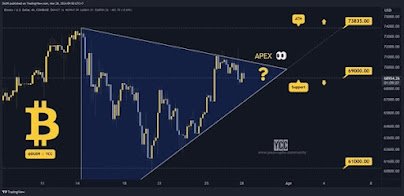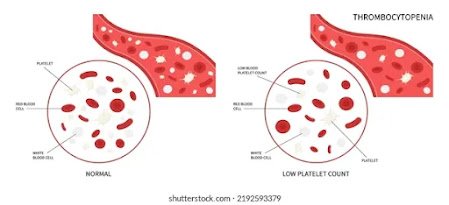Fifty years of vaccines that save lives: 154 million lives are saved by WHO’s EPI
MAY 7,2024
NR.BALOCH
Researchers have looked at the effects of the World Health Organization’s Expanded Program on Immunization (EPI) on public health, with findings published in The Lancet.
In 1974, the World Health Assembly committed itself to ensuring that everyone may benefit from vaccinations by establishing the Expanded Protection Index (EPI). By 1990, children were to be vaccinated against measles, poliomyelitis, smallpox, pertussis, tetanus, diphtheria, and tuberculosis, according to a WHO plan. As of right now, the EPI offers protection for all ages against other pathogens. The breadth of protection has significantly increased as a result of vaccination programs expanding to include more diseases.
Researchers modeled the effect of EPI on public health in the current study. They calculated the number of years of life gained, years of complete health acquired (i.e., disability-adjusted life-years averted), and years of life gained in WHO member states from June 1974 to May 2024 as a result of vaccination against 14 diseases.
The following diseases/pathogens were made vaccines against: rotavirus, poliomyelitis, rubella, invasive pneumococcal disease, tetanus, meningitis A, hepatitis B, yellow fever, diphtheria, Japanese encephalitis, pertussis, measles, poliomyelitis, and rubella. A uniform structure was created to evaluate the effect for each fully immunized person.
The group combined vaccination coverage estimates from the Vaccine Impact Modeling Consortium (VIMC), Immunization Dashboard, Supplementary Immunization Activities Database, and WHO’s Polio Information System. A total of 24 vaccination initiatives were assessed, divided into disease categories,
Firstly, impact estimates were obtained using the simulation of established measles and poliomyelitis transmission models for a 50-year timeframe. Second, from 2000 to 2024, VIMC transmission models for Japanese encephalitis, rotavirus, rubella, H. influenzae type B, and hepatitis B were expanded. Third, updated static disease burden models were created for diphtheria, tetanus, pertussis, and tuberculosis.
The three modeling approaches made it possible to capture vaccine effects at the individual and population levels. Estimating the effect of EPI on lives prevented, years of life gained, years of full health gained, and the percentage of infant mortality reduction related to vaccinations was the main goal of the study. These indicators were also assessed by the World Bank income stratum and region as secondary outcomes.
Results
According to the researchers, vaccination campaigns against the 14 infections prevented an estimated 154 million fatalities between June 1974 and May 2024, of which 146 million were prevented in children under the age of five. Nine billion life-years and 10.2 billion years of perfect health were also gained during this time. Gained were 58 years of life and 66 years of complete health on average.
Thanks to vaccinations, there have been fewer deaths, years of life preserved, and years of perfect health. The data spans the years 1974–2024. Measles: 93·7 million fatalities prevented, 5·7 billion years of life preserved, and 5·8 billion years of full health gained. Tetanus: 27·9 million fatalities prevented, 1·4 billion years of life preserved, and 1·4 billion years of good health gained. With pertussis, 1 billion years of complete health were acquired, 0.8 billion years of life were spared, and 13.2 million fatalities were prevented. 10·9 million deaths from tuberculosis are prevented; 0.6 billion years of life are preserved; and 0.9 billion years of good health are acquired. For Haemophilus influenzae type B, there were 2.78 million fewer fatalities, 0.2 billion more years of life saved, and 0.2 billion more years of good health gained. Poliomyelitis: 1·6 million fatalities prevented, 0·1 billion years of life saved, and years of
Notably, the prevention of poliomyelitis cases resulted in 0.8 billion years of increased health. The measles vaccination was the single most important factor in the 93.7 million lives that were saved over the course of 50 years in both World Bank income stratum and WHO areas. Additionally, since 1974, there has been a significant drop in infant mortality worldwide, with immunization directly contributing to 40% of this development.
If someone were to live to be 10, 25, or 50 years old in 2024, their chances of surviving the next year would be 44%, 35%, or 16% higher, respectively, than if they had not had any immunizations since 1974. The probability of surviving a life course increased most significantly in the African and Eastern Mediterranean regions, while it decreased most in the European zone. Upon
In conclusion
According to the research, vaccinations have prevented the deaths of an estimated 154 million people since 1974, the most of them (95%) were young children. This indicates that vaccinations have resulted in 10.2 billion extra years of healthy living and nine billion life-years saved. Interestingly, the measles vaccination was the single biggest factor.
Moreover, vaccinations accounted for about half of the decrease in infant mortality worldwide. As a result, the annual survival rate of a child born in 2024 will climb by 40%. Furthermore, the advantages of baby vaccination for survival last for more than 50 years. Areas with higher beginning mortality rates saw larger absolute advances at the expense of smaller relative gains.
Journal citation: Sim SY, Johnson HC, Shattock AJ, et al. Improving health and survival via immunization: a 50-year retrospective of the Expanded Program on Immunization. https://www.thelancet.com/journals/lancet/article/PIIS0140-6736(24)00850-X/fulltext The Lancet, 2024, DOI: 10.1016/S0140-6736(24)00850-X











